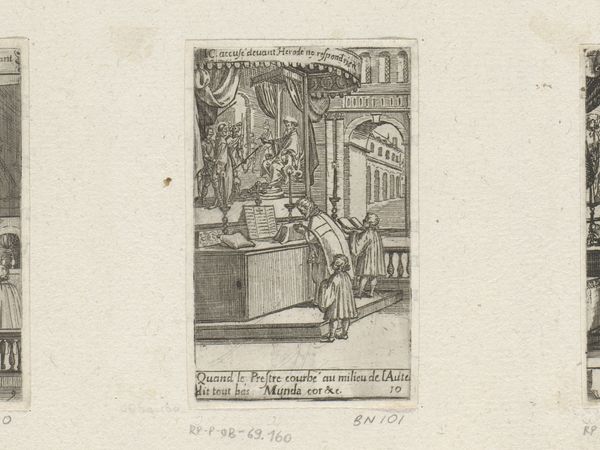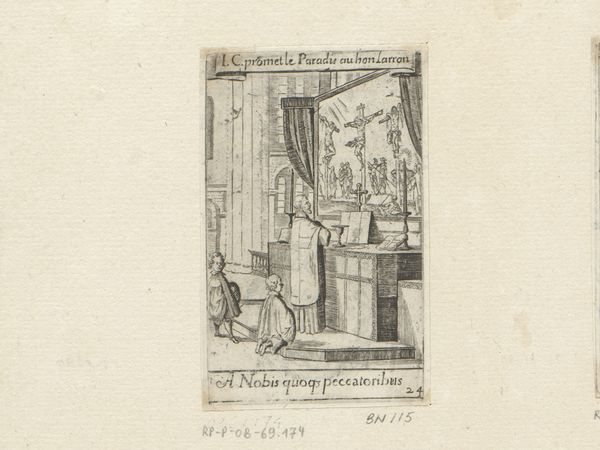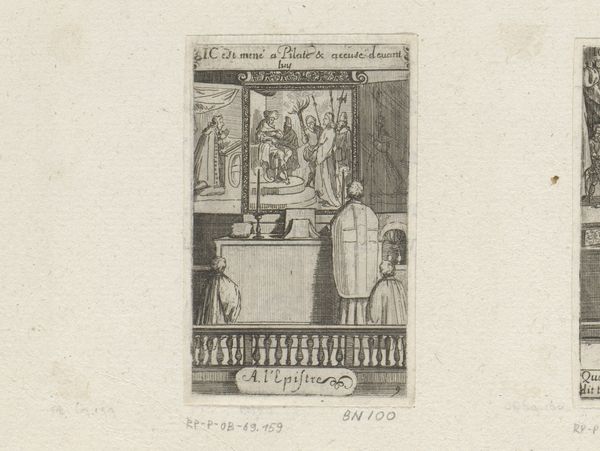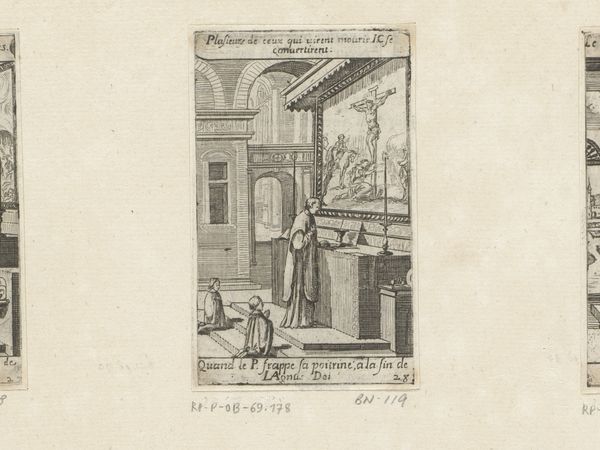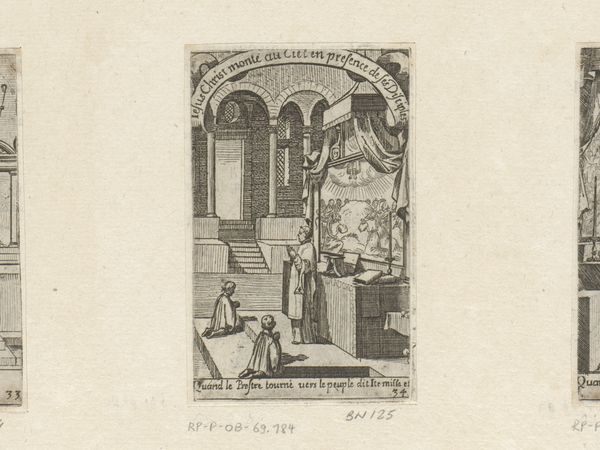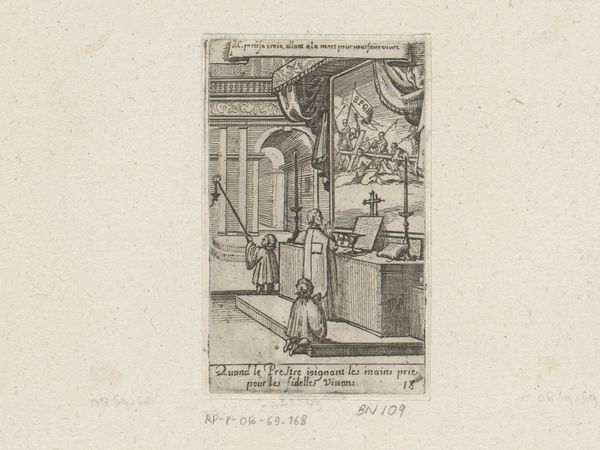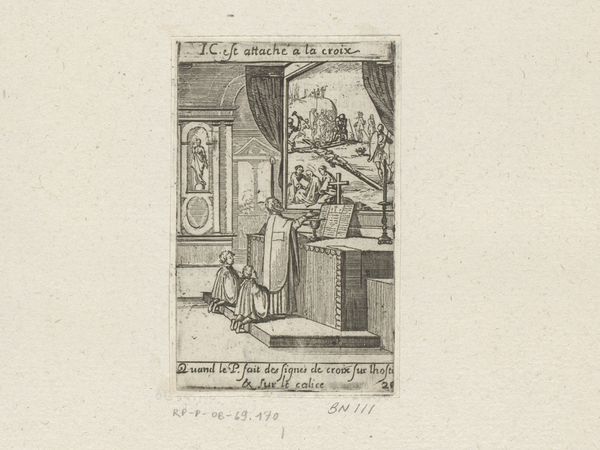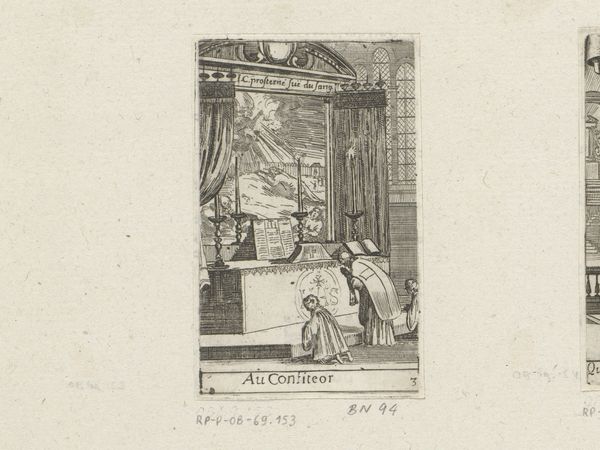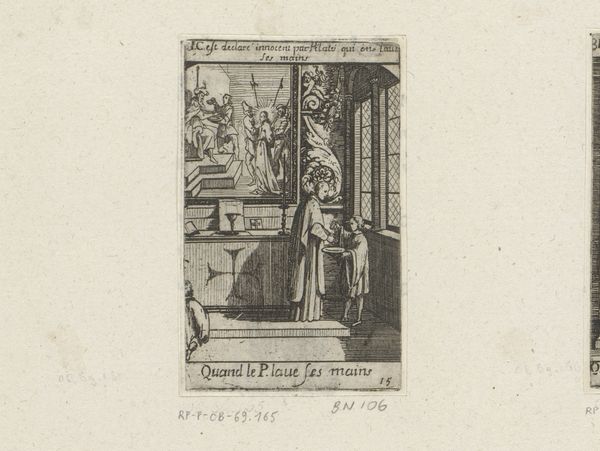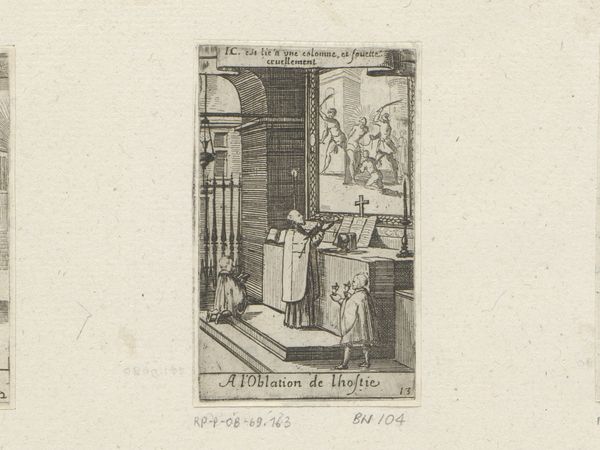
#
comic strip sketch
#
aged paper
#
light pencil work
#
quirky sketch
#
sketch book
#
personal sketchbook
#
sketchwork
#
sketchbook drawing
#
storyboard and sketchbook work
#
sketchbook art
Dimensions: height 84 mm, width 52 mm
Copyright: Rijks Museum: Open Domain
This is Sébastien Leclerc's etching, "Priester met twee geknielde misdienaars voor een altaar," made sometime between 1637 and 1714. The eye is drawn to the priest at the center, framed by the altar and flanked by kneeling figures, creating a composition with a clear focal point. Leclerc uses line and form to structure a narrative space. Observe how the linear perspective draws the eye to the painting above the altar, depicting a biblical scene. This layering of images within images creates a semiotic dialogue, where each element—the priest, the altar, the biblical painting—functions as a signifier within a larger religious context. The engraving's formal structure, with its carefully arranged figures and architectural elements, invites us to consider how Leclerc uses visual language to communicate religious themes and power structures. Notice the interplay of shadow and light, achieved through delicate hatching, which adds depth to the composition. This chiaroscuro effect emphasizes the sacred nature of the scene, inviting a contemplation of faith and devotion.
Comments
No comments
Be the first to comment and join the conversation on the ultimate creative platform.


